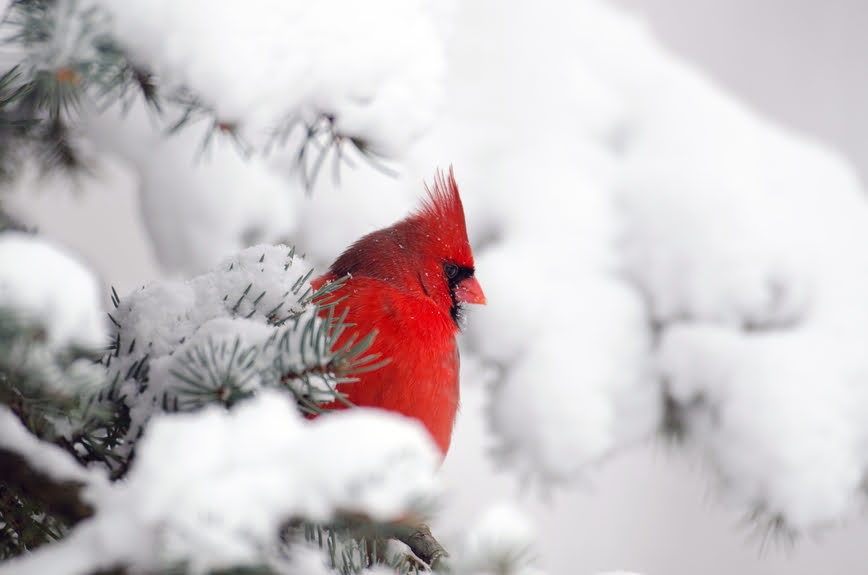
A winter garden is the perfect environment to create a wildlife habitat. Winter is the time to reflect and plan for the year ahead, as you watch the birds busily collecting food against the peaceful backdrop of a snowy landscape. If you and your family delight in bird watching, why not focus on plantings that will attract more birds and wildlife to your property? Here are some great ideas for creating your very own winter wildlife habitat.
Start with the Basics
Adding handcrafted feeders, nesting boxes and birdhouses will increase the number of birds visiting your yard and provide many hours of birdwatching for you and your family. But more importantly, plants are the key to attracting wildlife because they provide good nesting sites, winter shelter, hiding places and natural food supplies. Planting a variety of trees, shrubs and flowers is a wonderful way to increase the number of bird and wildlife species that visit your backyard habitat during the winter season.
Choose Region-Specific Plant Materials
Landscaping to beautify your home and increase its value is important; however, many plants native to Utah are both beautiful and attractive to birds and other wildlife. Native plants supply year-round food, a nesting habitat and shelter from harsh weather. Some great examples include serviceberry, golden currant, Douglas hawthorn and mountain snowberry, all varieties that produce fruit in the winter and appeal to many bird and animal species. Keep in mind, however, that different types of plants offer different benefits to local wildlife.
If We Could Talk to the Animals
Before planting, consider which vegetation will achieve your winter garden goals. Does
it provide dense cover for shelter? Fruit, flowers and seeds for nourishment? Or areas of tangles and branches for nesting? One important step to attracting wildlife to your winter landscape is to diversify your plantings, creating a beautiful and beneficial mix of species. Conifers such as pines, spruces, firs, arborvitae, junipers, cedars and yews are important for winter shelter and also provide sap, buds and seeds. Winter fruiting plants such as chokecherry, crabapple and snowberry bear fruit that remain attached to the plants long after they first ripen. Nut and acorn plants such as oaks, hickories, buckeyes and chestnuts are not only a good food source, but also offer an ideal nesting habitat.
Create Lasting Family Memories
As you select your plantings, make sure to include your family in the process, teaching kids new ways they can benefit local wildlife and the environment. Document your progress with photos and create a scrapbook to commemorate your creation. Try capturing images of your yard from the same spot every season and make a game of spotting wildlife. You can even create a list of birds and animals you’ve seen and research them together with your children.
For all your winter garden needs, including helpful advice on which plants are best, check out Millcreek Gardens in Salt Lake City. Their experienced gardening professionals can help you choose all the materials and accessories that will help your family successfully create and enjoy a wildlife habitat for your winter garden.


